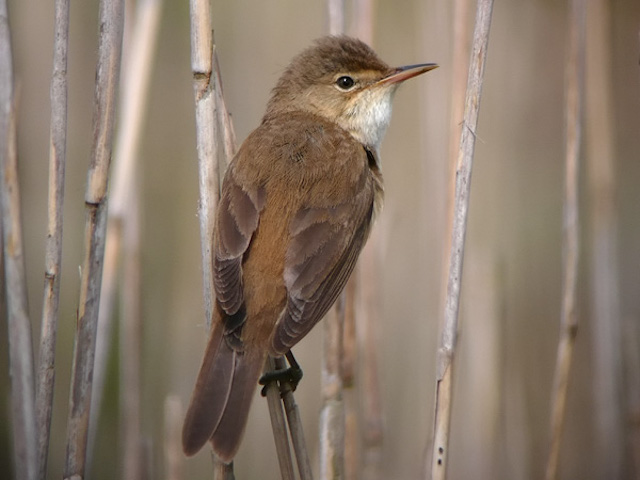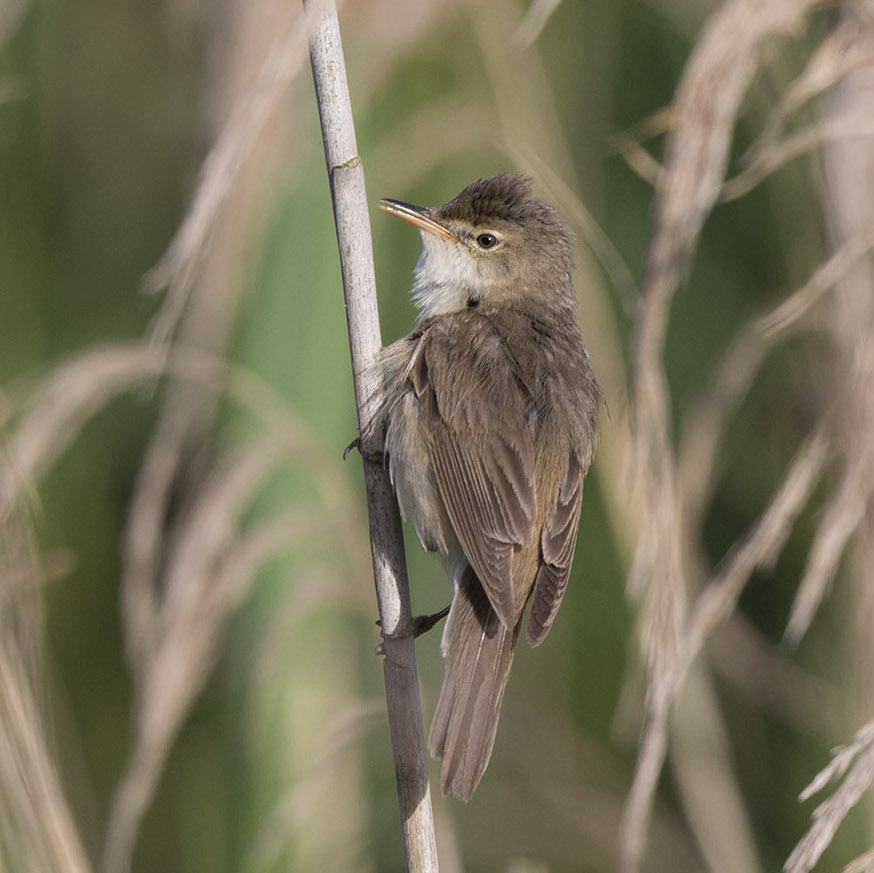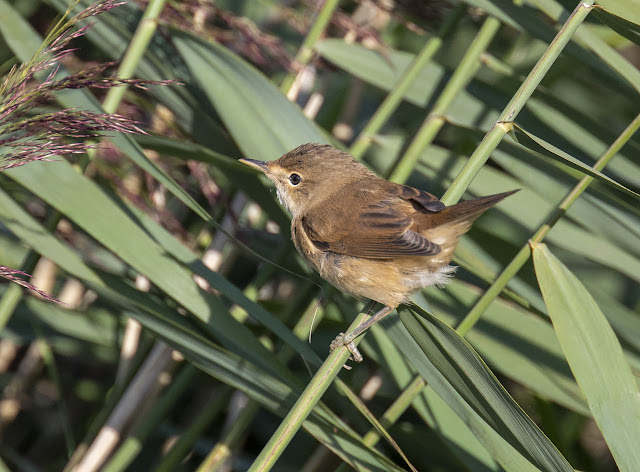Eurasian Reed Warbler Acrocephalus scirpaceous
Common summer visitor and passage migrant.



What has Eurasian Reed Warbler got that most other insectivorous trans-Saharan migrants lack? A good question that no one knows the answer to. It migrates the longest distance into African and yet has shown the greatest long-term population increase on the BTO BBS index. Since 1994 its index for England has increased by 20%. Its change of status in Lincolnshire throughout that period is difficult to assess as it appears in too few BBS squares to produce a local index. However, the Atlas estimated a population of 6,000 pairs in the 1980s while APEP4 adjusted comes in at 10,000 pairs in 2016. It is very much a Phragmites specialist when it comes to breeding though it will venture out into surrounding habitat to feed. Lincolnshire has countless narrow reed-filled dykes and ditches and it exploits them to the full, down to the narrowest ditch. In such habitats it becomes easier to monitor. In large inaccessible reed beds it can present an impossible task! During passage it can turn up in all kinds of scrubby habitat and can present novices with an identification challenge.
As with Sedge Warbler, A. scirpaceus, more than one million Eurasian Reed Warblers have been ringed in the UK, 1909-2021 (BTO data). In the decade 2012-2021, an average of 24,656 were ringed annually in the UK, with an average of 296 ringed per year in Lincolnshire, around 1.2% of the total. The longevity records for Lincolnshire-ringed birds show several between 7-8 years old. Most long-distance controls within the UK have come from the south coast, and ringed birds abroad have been trapped or found dead in Belgium, Channel Islands, Côte d’Ivoire, Senegal and Western Sahara. Foreign-ringed birds retrapped in the county have come from Belgium, France, Morocco, Portugal, Senegal, Spain and Sweden.
(Updated with reference to the new Birds of Lincolnshire (2021) November 2022)
